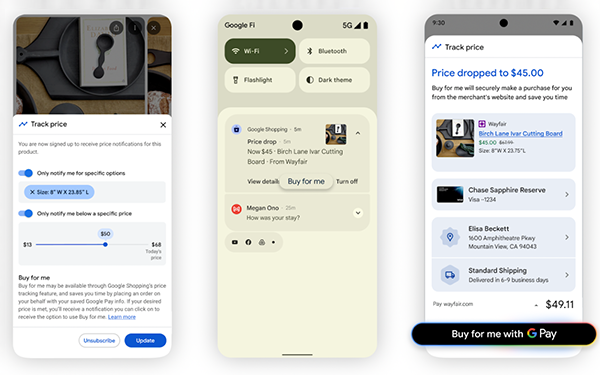
Google users in the U.S. will have access to new features,
beginning on Thursday, that perform specific tasks that include searching for products, comparing similar items, tracking prices and making a purchase.
Google’s shopping graph is being
tied into its Gemini model to support shopping upgrades based on agentic technologies. An agentic feature will find products in local stores, call merchants, and in some cases, make a purchase
after consumers describe what they want.
AI is being embedded in most parts of online services, including intelligence, in almost every aspect of how people shop online.
Advancements in artificial intelligence (AI) and agentic models can help shoppers find and purchase products with less time and effort, as advertisers use the technology to create and optimize
ads.
“Sometimes it’s troubling to find the words to express what you want,” said Vidhya Srinivasan, vice president and GM of ads and commerce at Google. “We want
to hold on to all the fun things about shopping like browsing and discovery.”
advertisement
advertisement
Collectively, consumers shop on Google more than 1 billion times daily.
On Thursday, the company
introduced major AI shopping upgrades in Search AI Mode that are designed to focus on the "fun things" about shopping and get “rid of all the difficult parts.”
An agentic feature
will call participating merchants to see if that product is in stock. If the consumer is looking for the Starbucks Holiday Bearista bear cup, for example, which many of the store’s baristas say
is completely sold out, “Let Google Call” will call local Starbucks to find the product nearby.
When deciding between a moisturizer option suited for a specific skin
type, the agent will serve up a comparison table with a side-by-side view of specific product, including insights from reviews with information such as how a moisturizer feels on skin.
AI does
the work for the customer behind the scenes, calling to find out if stores nearby have products that consumers are looking for and how much they cost and whether there are any promotions, which gives
merchants and advertisers a new way to drive foot traffic into stores.
This feature is powered by Google’s Duplex technology, with a significant Gemini model upgrade that helps identify
the best stores to call, suggests helpful questions to ask based on the product the consumer wants and summarizes the conversations into key takeaways.
This feature has begun to roll out today
in categories including toys, health and beauty and electronics on Google Search in the U.S.
In the past, search has been keyword driven, but now it is conversational with long sentences and
more detail — about two to three times longer than previous types of searches.
Updates pair Google Gemini models with Google Shopping Graph, which supports more than 50 billion product
listings. Of those, 2 billion are updated hourly.
AI Mode detects the outdoor temperature of the location where consumer is searching and determines how to style outfits, so when someone is
shopping for a sweater, the technology takes fabric and style into consideration.
“Google Checkout,” an agentic feature that will track an item’s price using a price-tracking
feature, has begun to roll out.
Shoppers can select items and specific colors or sizes, and tell the agent the price they want to spend. When the item drops below that price, Google’s
agentic checkout will let the shopper know so they can confirm the buy.
Google Pay completes the transaction. This feature will begin rolling out with merchants including Wayfair, Chewy,
Quince, and some Shopify sellers.